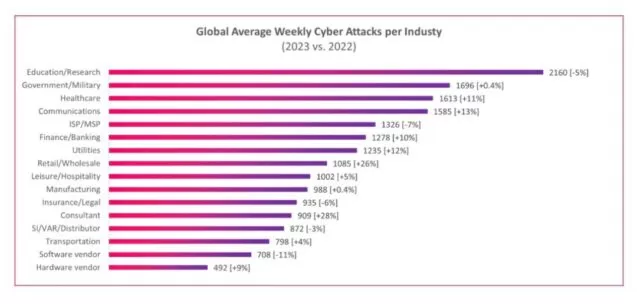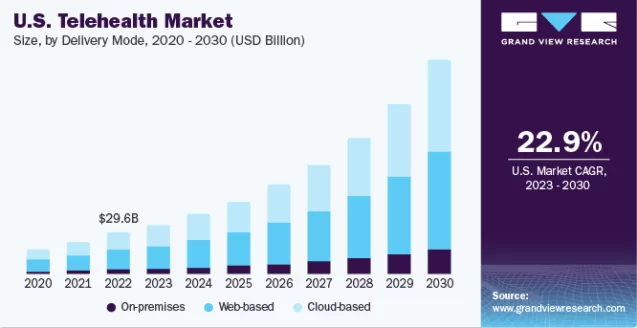Medical billing software is completely transforming the way medical practices process and track claims, making billing a far more effective process. Join us as we delve into details on how we craft robust medical billing solutions here at Elinext.
Running an effective medical billing process is essential for the health of your organization’s bottom line.
Still, today’s medical billing process is time-consuming and prone to errors — shifting through piles of paper, scouring physical files for information to process bills, while ensuring on-time and accurate patient payments — all these tasks hold back practices from ultimate efficiency.
Medical billing platform, however, makes it possible for practitioners to make their medical billing process smooth and comprehensible.
Using a customized, fine-tuned solution within a healthcare organization, can make patient information more accessible, and minimize paperwork, manual work, and errors. Integrating medical billing software can also simplify compliance with essential industrial regulations, and structure and speed up the reimbursement process.
With that, building medical billing software can be a daunting task — the healthcare industry is tightly regulated, so any medical software must adhere to strict rules and standards.
Nevertheless, key considerations can be taken to prevent mistakes and help with a steady stream of payments in the revenue cycle. Let’s delve into further details.
Important Factors to Consider for Medical Billing Software
The things for a healthcare provider to consider include:
Data Security and Privacy
A data breach happens more frequently than one might expect, with many of them being unintentional. This isn’t simply speculation; in 2023, healthcare entities globally endured 1,613 cyberattacks per week (+ 11% as compared to 2022).
Global Average Weekly Cyber Attacks per Industry (2023 vs. 2022)
Source: Check Point
Thus, HIPAA, GDPR, PIPEDA, HL7 FHIR, DICOM, MedMij, and PCI-compliant mean a lot when you start billing software development.
Integration Across Multiple Platforms
Сonnecting dozens of intricate devices and hospital systems (such as Electronic Health Record software, Hospital Management Systems, etc.) may become a challenge — differences in technical specifications or disparate data structure can lead to missing information, faulty records, and, ultimately, to substandard services.
Having a versatile integration interface is key to streamlining financial operations within EHRs and other systems, and your tech partner must be able to ensure it.
Integration with Various Payment Systems
In today’s digital age, it’s only natural for patients to expect different payment avenues, like credit/debit cards, HSA cards, and digital wallets like Apple Pay, PayPal, Venmo, and other online payment options.
So, ensuring the software integrates with multiple payment options is becoming imperative.
These three components are necessary if you want to make your medical billing software development cost you less and cause no re-does along the way.
Key Features To Look Out For in Medical Billing Software
A crucial part of developing a successful medical billing system comes down to choosing the right software functionalities. Here are some of the essential features you should implement into your product to manage billing operations with no issues.
Patient Data Management
Information management features involve storing and managing comprehensive patient data, such as insurance details, demographic information, test results, immunizations, allergies, previous treatments, and billing records. Incorporating a patient data management module also enables care providers to implement telehealth, which is on the rise and popular with patients.
U.S. Telehealth Market, Source: Grand View Research
Insurance Verification
The insurance check feature allows healthcare organizations to confirm that the patient has adequate coverage for the care that they will receive. Additionally, verification helps find out what the patient’s policy benefits are, if the patient’s insurance company requires pre-authorization, and so on.
Claims management
The entire process of claims is a highly bureaucratic procedure that is often prone to errors, delays, and denials. The cost of denials soared 67% in 2022. In light of this, claims management is an essential feature of any medical billing software. This feature will facilitate the following:
- Claims creation
- Claims tracking
- Claims submission
- Denial management
Billing Analytics and Reporting
Integrated intelligent analytics generates detailed reports, revealing valuable patterns hidden in financial data — billing trends, payment patterns, denial rates, and revenue generation. These insights will highlight areas for improvement and enhance overall financial performance.
Appointment Scheduling and Rescheduling
A problem that your healthcare facility most likely faces is patient no-shows and cancellations. Forbes reports that the U.S. healthcare sector loses a staggering $150 billion every year due to missed appointments. Medical billing software with this feature allows clinicians to analyze previous appointments, lets patients book them online 24/7/365, and enables a better management system.
EHR Integration
Medical billing software that’s integrated with an EHR helps providers access key patient data effortlessly and make informed decisions faster. Moreover, the feature eliminates duplication of efforts and enhances coordination among teams Surely, this list of medical billing software features is far from comprehensive. Each healthcare organization is unique, meaning the features needed will vary based on the facility’s size, specialty, treatment type, and so on.
7 Steps to Medical Billing Software Development
A successful medical billing software project requires careful planning and coordination of many activities. Below are the steps to develop a billing system that your organization will need to take.
1. Contact
The journey begins with choosing a reliable software provider, which will have a direct effect on the quality of your software product. It is of paramount importance to collaborate with experts who speak medical coding fluently to offer you experienced advice and understand your medical practice to the core.
2. Carry out requirement analysis
The next critical step in the design of the billing system is to conduct an exhaustive analysis of the organization’s current systems, workflows, and gaps in the existing billing process to identify the specific requirements that the new solution needs to meet.
Beyond assessing needs and goals, at this stage, the IT team and relevant stakeholders discuss essential quality factors, scope of work, budget constraints, and primary risks.
3. Design
This phase implies morphing all the project’s requirements into particular technical specifications. These specifications serve a project team as a detailed roadmap they can follow throughout the entire development process.
Some of the main points that technical specifications aim to address are:
- System architecture
- A list of software features
- Platform to launch the software
- Development milestones
- Testing criteria
- Measuring impact
- Security and privacy measures
4. Develop
This step is going to be the bulk of your work on the medical billing software. Typically, the development phase consists of two sub-phases — Coding and Integration.
Coding: Engineers code according to the product specifications and requirements that were agreed upon in the earlier stages.
The stack employed in the development of medical billing software may include:
- Back-end: Python, Java, Ruby on Rails, or Node.js
- Database: MongoDB, MySQL, PostgreSQL
- Front-end: HTML5, CSS, JavaScript, Angular, React, Vue.js
- APIs: SOAP, RESTful, GraphQL
- Security: Encryption, including SSL/TLS
- Cloud: AWS, Azure, GCP.
Integration: Once the coding is complete, programmers need to set up connections with existing hospital systems and solutions, such as EHRs, insurance providers, medical coding systems, payment services, RCM, and EDI.
5. Test
Testing is a process that works parallel to the development of software, aiming to uncover code defects and notify the development team so they can improve the program.
Comprehensive software testing allows for addressing any issues before full-scale deployment and is critical for the software’s effectiveness and user adoption within the medical facility.
6. Deploy
Once the software is defect-free, developers can deploy it to the prepared live environment, installing and configuring the program accordingly. Often, this stage includes training real-time users on the new rolled-out system.
7. Maintain
Post-implementation maintenance focuses on providing continuous support, troubleshooting, and regular updates.
Ongoing collaboration between the development team and the healthcare provider plays a role for it fosters a responsive and adaptive system to align with the ever-changing healthcare landscape.
To sum it up
Medical billing software has immense potential to revolutionize the way medical practices manage their revenue cycles. By integrating billing software into existing operations, healthcare institutions can streamline paperwork and documentation, ensuring accurate and timely filing of claims while minimizing medical billing errors. This reduces claim denials, delays, and potential revenue loss. Moreover, a seamless and clear billing process allows practitioners to elevate the patient experience and increase loyalty among their patient population.
Consider Elinext Your Trusted Partner
Elinext knows how to create a robust medical billing system first-hand. One of our cases was developing a HIPAA-compliant Medical Practice And Billing Software that not only allows management of medical records, billing, and payments, but also makes it possible for patients and doctors to buy medicaments within the app, reach out to coaches, staff, vendors, and billing team, and even create customized documents and application forms with unique styles. Partnering with Elinext, you get seasoned developers with a strong understanding of the regulatory, financial, and administrative complexities involved in the development of healthcare solutions.
Have a look at our Case Studies page for a sample list of our completed projects.











